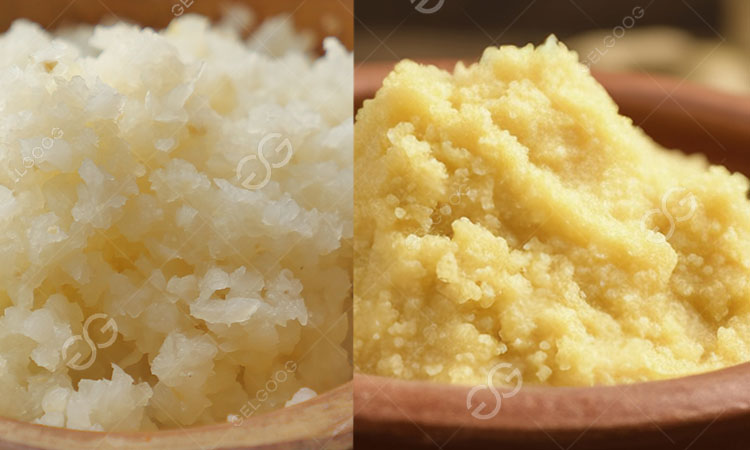Ginger-garlic paste is a common compound seasoning sauce, which is made by mixing and grinding ginger and garlic in a specific ratio, and has a strong spicy flavor. With the growing market demand for convenient seasonings, ginger-garlic paste has become one of the important products of food processing factories. But how to make ginger garlic paste in factory?

The processing of ginger garlic paste can be roughly divided into several key steps, including pretreatment, grinding, mixing, filling and sterilization. Depending on the configuration of the ginger garlic paste production line and the scale of production, some steps can be integrated and completed automatically.
1. Ginger processing process
- Cleaning: Use a brush roller cleaning machine or bubble cleaning machine to remove surface dirt, impurities, etc.
- Peeling: Use a ginger peeling machine (usually a roller type) to remove the ginger skin to ensure the taste and color of the sauce.
- Grinding: Use a colloid mill to grind the peeled ginger into a fine sauce to ensure the fineness.
2. Garlic processing process
- Peeling: Use a garlic peeling machine to quickly peel the garlic skin while ensuring its integrity.
- Cleaning: Use a bubble cleaning machine to remove residual skin and impurities.
- Grinding: Similar to the processing method for ginger, use a grinder to process the garlic into a paste to achieve a fine and uniform standard.
3. Mixing and blending of ginger and garlic paste
Mix the ground ginger paste and garlic paste according to the product formula ratio, add appropriate amount of salt, vegetable oil, citric acid, antioxidants or other preservatives in the mixing tank, and mix them homogenously to make the texture uniform and the flavor stable.
4. Filling and Sealing
After vacuum exhaust or gas replacement, the mixed ginger-garlic paste is automatically filled into glass bottles or food-grade plastic bottles by a filling machine and then sealed by a capping machine.
Precautions during the production process
- Raw material freshness: Ginger and garlic should be clean, fresh, free of mold and insects, which directly affects the quality of the paste.
- Equipment cleaning and disinfection: The beater, conveyor belt, filling equipment, etc. must be thoroughly cleaned and disinfected before and after each production.
- Control odor volatilization: Garlic will release a strong odor during processing, and a good ventilation system should be set up.
- Prevent oxidation discoloration: The contact with air should be minimized during the grinding and mixing stages, and antioxidants should be added if necessary.
- Stable formula ratio: Each production must be strictly mixed according to the ratio to avoid uneven flavor.